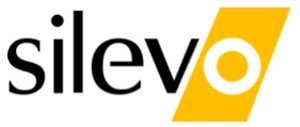We live in a world that increasingly demands cheap energy. In the last few decades, energy demands in the United States have grown at a steadily increasing rate. Not to mention our global energy needs are rising too. Developing nations, in particular, will need substantial amounts of energy to raise their standards of living.
Our traditional sources of energy—coal, oil, and natural gas—are becoming more expensive and harder to find. But what if we lived in a sustainable society? Would we run out of energy? If we stick to our traditional methods of creating energy, it is quite possible that one day these sources will run out.
Does our traditional energy supply present other concerns? Absolutely! Let’s take a look at the influence of traditional energy on environmental impact. As we know, it’s customary to burn fossil fuels in order to create energy. However, this method pumps vast quantities of pollution into our air and water. The other issue is our earth only has a finite amount of fossil fuels and it’s inevitable that it will run out.
What’s the alternative? Solar power can resolve our energy crisis. As long as the earth has sunlight, solar energy remains a viable and environmentally friendly option for our consumption needs. Did you know the growing popularity of solar power is even intimidating energy giants? Why? Because they know many consumers are turning to solar energy to power their homes and businesses. It’s cheaper, safer and cleaner on our planet.
How does solar energy work? Solar cells, or photovoltaics (PV), work by converting light into electricity at the atomic level. Certain materials exhibit a property known as the “photoelectric effect,” which causes them to absorb light photons and release electrons. When these free electrons are captured, it results in the release of an electric current that can then be harnessed as electricity.
 A huge leap forward for solar energy recently has been the acquisition of solar panel manufacturer, Silevo, by America’s largest solar installer – SolarCity. How does this benefit the progress of solar power? There are two major benefits. The first advantage is a significant increase in solar company values and investments. Recently SolarCity’s stock value increased by 25%, while other solar companies have seen their value increase as well; including Yingli Green Energy by 8% and ReneSola by 10%.
A huge leap forward for solar energy recently has been the acquisition of solar panel manufacturer, Silevo, by America’s largest solar installer – SolarCity. How does this benefit the progress of solar power? There are two major benefits. The first advantage is a significant increase in solar company values and investments. Recently SolarCity’s stock value increased by 25%, while other solar companies have seen their value increase as well; including Yingli Green Energy by 8% and ReneSola by 10%.
As the valuation of solar company’s increase, financial institutions will be more confident about this market. Roadblocks with third-party lending could decrease as banks become more attracted with investing in solar companies.
 The other benefit is a shifting towards everything being provided under one roof. With over 68,000 customers worldwide, SolarCity is joining the movement towards newer and more efficient systems; in which partner companies can tend to both manufacturing and installation needs, and possibly even manage financing.
The other benefit is a shifting towards everything being provided under one roof. With over 68,000 customers worldwide, SolarCity is joining the movement towards newer and more efficient systems; in which partner companies can tend to both manufacturing and installation needs, and possibly even manage financing.
About 39 percent of America’s carbon emissions come from commercial and residential buildings, and the majority (approximately 33 percent) come from the transportation industry – moving people and goods. Interestingly, aside from homeowners, more businesses have decided to go solar; because it makes both financial and environment sense.
 Businesses can significantly reduce their commercial carbon footprint and CO2 emissions through clean, renewable energy from the sun. In fact, commercial solar installations have increased by 487% in the past five years. However, businesses are often reluctant to invest in solar, because they’re unaware of the benefits of doing so. For example, large and small businesses can benefit from energy-tax credits, solar incentives and energy rebates that can radically decrease the purchasing cost of a solar system. Until 2016, federal tax credits of 30% can be applied to all expenditures on solar panel installations and other alternative energy solutions.
Businesses can significantly reduce their commercial carbon footprint and CO2 emissions through clean, renewable energy from the sun. In fact, commercial solar installations have increased by 487% in the past five years. However, businesses are often reluctant to invest in solar, because they’re unaware of the benefits of doing so. For example, large and small businesses can benefit from energy-tax credits, solar incentives and energy rebates that can radically decrease the purchasing cost of a solar system. Until 2016, federal tax credits of 30% can be applied to all expenditures on solar panel installations and other alternative energy solutions.
With advances in the technology behind solar power as well, it is becoming ever more efficient. Thin film and silicon solar cells increase efficiency, allowing the space taken up by solar panels to be reduced by up to 25%, while still getting out the same amount of energy per kilowatt.
Another plus side is a significantly lower cost factor to the end consumer. Currently only 0.4% of the power in the US is supplied by solar energy. If they have their way, the energy giants will keep it that way. With the lower cost of solar power, energy companies have a lot to lose if popularity grows; but at some point, the world has to realize we need to start advancing, now more than ever, towards reliable, cost-effective and renewable energy. Solar power is the obvious answer to all those factors and more people will make the switch as fossil-fuel power becomes increasingly costly and/or continues to destroy our planet.

